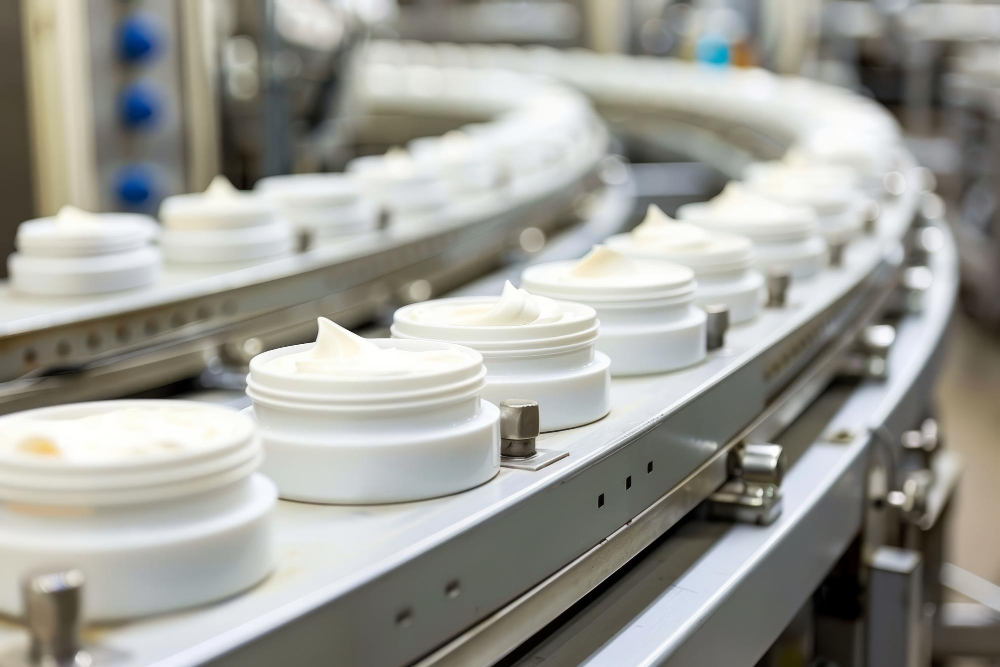Key Takeaways
- Overview of semisolid dosage forms in pharma
- Step-by-step manufacturing process for ointments and creams
- Key differences in formulation, equipment, and applications
- GMP, validation, and quality control practices
- Leading technologies and manufacturers in the space
Abstract
This article explores the manufacturing of ointments and creams, two cornerstone semisolid dosage forms in the pharmaceutical and cosmeceutical industries. From formulation and emulsification to filling and packaging, each step is critical to product quality and efficacy. This comprehensive guide dives deep into types of ointments and creams, processing techniques, equipment used, regulatory considerations, and trends in automated production.
I. Introduction: More Than Skin Deep
Creams and ointments have been part of medicine for centuries, from ancient herbal balms to modern steroid formulations. Today, they're not only vehicles for delivering topical relief but also crucial tools for transdermal drug delivery.
But behind every smooth application lies a complex interplay of formulation chemistry, equipment precision, and rigorous quality control. This article takes you into the manufacturing floor—where semisolid science meets pharmaceutical excellence.
II. Understanding Semisolid Dosage Forms
A. What Are Ointments and Creams?
- Ointments: Greasy, occlusive, water-free or water-in-oil (W/O) semisolids
- Creams: Less greasy, non-occlusive, oil-in-water (O/W) or W/O emulsions
Here's a clear breakdown of the key differences between ointments and creams:
B. Applications of Ointments and Creams
Semisolid formulations like ointments and creams serve a wide array of therapeutic, diagnostic, and cosmetic purposes. Their versatility stems from the ability to tailor base composition, API concentration, and excipients to specific delivery needs.
1. Dermatological Therapies
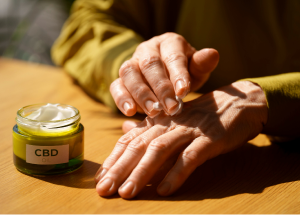
- Barrier Repair & Moisturization: Ointments rich in occlusive agents (e.g., petrolatum, mineral oil) help restore barrier function in atopic dermatitis, psoriasis, and xerosis by minimizing water loss and enhancing skin hydration.
- Anti-inflammatory & Immunomodulatory: Creams formulated with corticosteroids (e.g., hydrocortisone, betamethasone) or calcineurin inhibitors (e.g., tacrolimus) offer rapid relief of inflammation in eczema, contact dermatitis, and lichen planus, with a lighter feel that's suitable for large body surface applications.
- Antimicrobial & Antifungal: Ointments containing mupirocin or clotrimazole deliver concentrated drug levels to superficial infections such as impetigo, candidiasis, and tinea corporis, leveraging prolonged contact time on the lesion.
2. Ophthalmic & Ocular Delivery
- Sterile Ointments: Formulations like erythromycin or tobramycin ophthalmic ointments provide sustained antibiotic exposure in conjunctivitis and blepharitis. The greasy base prolongs drug residence time on the ocular surface, reducing dosing frequency compared to solutions.
- Lubricants: Preservative-free petrolatum-based ointments (e.g., for dry eye syndrome) protect the cornea overnight by forming a protective film, offering relief from irritation and preventing complications such as corneal abrasions.
3. Transdermal & Localized Pain Relief
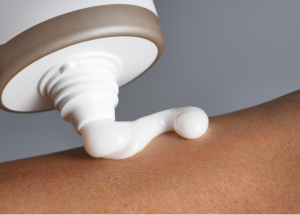
- Analgesic Gels/Creams: Creams with NSAIDs (diclofenac, ibuprofen) or counterirritants (menthol, capsaicin) penetrate superficial tissues to alleviate musculoskeletal pain, sprains, and arthritis. Their non-greasy bases support patient compliance, especially for sports or active lifestyles.
- Patch Enhancers: Some ointment bases act as penetration enhancers in transdermal patches (e.g., fentanyl or nitroglycerin), where semisolid "priming" increases skin permeability prior to patch application.
4. Cosmetic & Cosmeceutical Uses
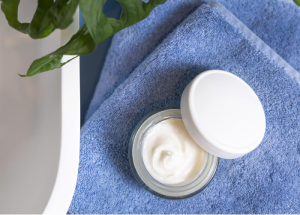
- Anti-Aging & Depigmenting: Creams with retinoids, vitamin C, or hydroquinone target fine lines, hyperpigmentation, and photoaging. Their emulsion systems enhance skin feel and ensure uniform API distribution for aesthetic improvements.
- Sun Protection: Creams incorporating UV filters (oxybenzone, zinc oxide) and emollients balance high SPF with pleasant sensory attributes, driving consumer acceptance in daily skincare routines.
5. Specialized & Emerging Applications
- Vaccination & Immunotherapy: Research is exploring ointment-based adjuvant systems for transcutaneous vaccination, leveraging skin's immune cells for needle-free delivery.
- Nanocarrier Systems: Creams and ointments embedding liposomes, niosomes, or nanoemulsions enable targeted delivery of API—such as siRNA or peptides—across the stratum corneum for advanced dermatological and systemic therapies.
Each application leverages the inherent strengths of ointment or cream bases—occlusivity, emulsion stability, or API retention—tailored to the therapeutic or cosmetic objective. This adaptability ensures semisolid systems remain foundational in both traditional and cutting-edge delivery strategies.
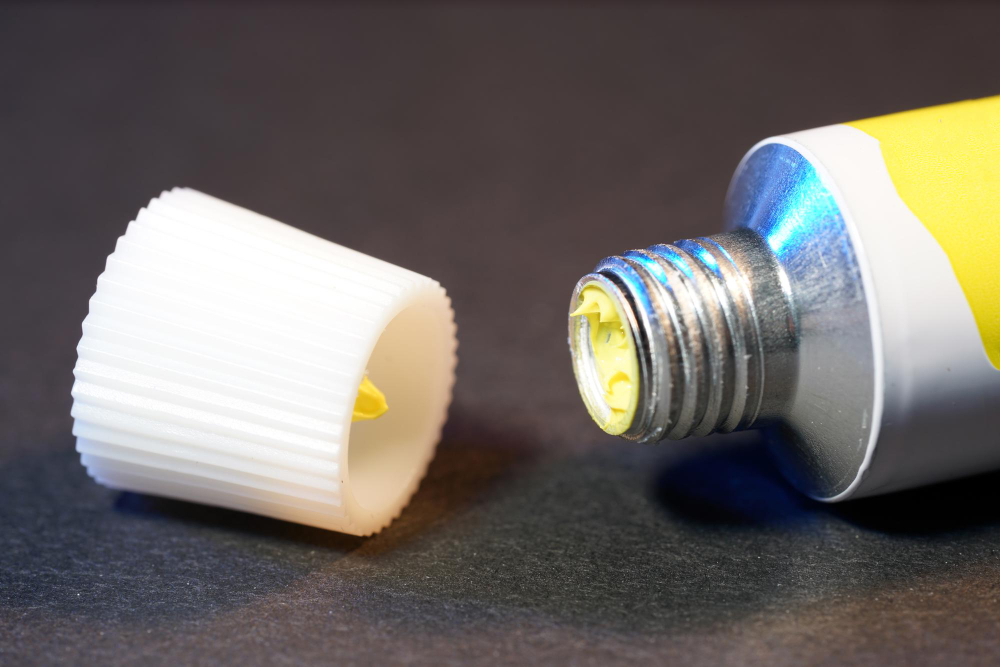
Types of Bases in Ointment Formulation: Choosing the Right One
Read MoreIII. Formulation Basics
A. Key Components
The key components in Ointment and Cream Manufacturing are:
Emulsifiers (for Creams)
Emulsifiers are surface-active agents with both hydrophilic and lipophilic regions, designed to reduce interfacial tension and stabilize oil-in-water (O/W) or water-in-oil (W/O) emulsions. Common examples include polysorbates for O/W systems and sorbitan esters for W/O systems, each selected to control droplet size and maintain long-term stability.
The Hydrophilic-Lipophilic Balance (HLB) value directs choice—higher HLB emulsifiers favor O/W formulations, while lower HLB agents suit W/O blends. Using the correct emulsifier concentration is critical to prevent phase separation, creaming, or droplet coalescence over the product's shelf life.
Preservatives
Because creams—and certain ointments—contain water, effective preservation is essential to inhibit microbial growth. Broad-spectrum biocides such as parabens, phenoxyethanol, or benzyl alcohol are selected for their microbial efficacy and skin compatibility.
Preservative performance is confirmed via challenge tests (e.g., USP <51>), ensuring protection over the product's intended shelf life. Formulation scientists also evaluate potential interactions with APIs or emulsifiers that might diminish antimicrobial activity.
Active Pharmaceutical Ingredient (API)
The API is the therapeutic heart of any semisolid formulation, providing the intended pharmacological effect. Its physicochemical properties, such as solubility, particle size, and stability dictate the choice of base and processing parameters. For example, a poorly soluble corticosteroid may require micronization to achieve uniform dispersion and bioavailability in an ointment.
API loading must balance efficacy with safety, preventing local irritation or systemic absorption beyond desired levels. Rigorous characterization (e.g., polymorphic form, hygroscopicity) ensures consistency batch after batch.
Stabilizers and Antioxidants
In pharmaceutical ointments and creams, stabilizers and antioxidants are essential for maintaining product quality and extending shelf life. Stabilizers such as cetostearyl alcohol, carbomers, and emulsifying waxes ensure the physical integrity of emulsions, preventing phase separation, graininess, or viscosity loss over time.
Antioxidants like butylated hydroxytoluene (BHT), butylated hydroxyanisole (BHA), ascorbyl palmitate, and alpha-tocopherol (Vitamin E) protect oils, fats, and active ingredients from oxidative damage caused by air, light, or heat. This not only prevents rancidity and discoloration but also preserves the therapeutic potency of the formulation.
Humectants (e.g., Glycerin)
Humectants draw moisture from the environment into the stratum corneum, boosting skin hydration. Common examples—glycerin, propylene glycol, and sorbitol—each bring unique viscosity and water-binding characteristics.
In creams, humectants fortify the water phase, enhancing spreadability and skin feel. In ointments, they're blended into absorption or water-removable bases to temper greasiness. Carefully calibrated humectant levels deliver lasting moisture without tackiness.
B. API Incorporation Techniques
These are the following techniques most commonly used to incorporate the components:
Fusion: APIs Added During Melting
Fusion works best when both the base and API remain stable at elevated temperatures. The base is melted (typically 70–75 °C), and the API is incorporated directly into the molten mixture, ensuring even heat distribution and seamless integration of heat-stable actives (e.g., petrolatum-soluble vitamins).
Gentle agitation during controlled cooling prevents API agglomeration and preserves homogeneity. Although fusion streamlines processing, thorough validation is essential to confirm that no thermal degradation occurs.
Levigation: For Insoluble Solids
Levigation refines insoluble APIs into a fine, uniformly wet paste, improving dispersion in the final semisolid. A minimal amount of base or wetting agent is added to the API in a mortar and pestle, and the mixture is triturated until a smooth, lump-free suspension forms.
This pre-mixed paste is then gradually incorporated into the bulk base, ensuring even API distribution throughout the batch. Levigation is especially important for potent or poorly wettable drugs, as it mitigates dose variability and eliminates "hot spots."
Dissolution: APIs Dissolved Before Mixing
Dissolution is used for APIs that are inherently soluble—either in water or oils—so they form true solutions in their respective phases. Water-soluble actives (e.g., certain antibiotics) are fully dissolved in the heated aqueous phase, while oil-soluble compounds (e.g., fat-soluble vitamins) are dissolved into the oil phase prior to emulsification.
This approach ensures uniform drug distribution and can enhance bioavailability by eliminating undissolved particulates. An analytical assay (e.g., HPLC) confirms complete API solubilization in the pre-mix before continuing to full batch assembly.
IV. Manufacturing Process Overview
Here is a brief overview of the process of manufacturing:
A. Material Preparation
Before starting any semisolid batch, all raw materials—from APIs to excipients—are subjected to stringent inspection. Certificates of Analysis (CoAs) are verified to confirm identity, purity, and particle size; any nonconformance results in quarantine and retesting in accordance with GMP requirements.
Weighing and dispensing take place in ISO 7 (or cleaner) controlled suites, where temperature and humidity are tightly regulated. Automated gravimetric or volumetric systems deliver ±0.5% accuracy, minimizing dosage variability. Every transaction is recorded by the operator following detailed SOPs to ensure full traceability.
When powders are used, they are passed through validated mesh sieves to eliminate agglomerates and foreign matter. This critical step prevents clumping of APIs and excipients, facilitating smooth downstream mixing and uniform drug distribution.
B. Phase Preparation
Semisolid production is built on two core phases: oil and aqueous.
- Oil Phase: Lipophilic components—such as waxes (e.g., cetyl alcohol), petrolatum, and liquid oils—are charged into a jacketed vessel and gently heated to 70–75 °C. At this temperature, the ingredients melt and coalesce into a uniform, occlusive matrix.
- Aqueous Phase: In a separate temperature-controlled tank, purified water is blended with humectants (e.g., glycerin) and preservatives. Gentle agitation prevents foaming as hygroscopic agents dissolve. Both phases are maintained at their target temperatures until ready for emulsification.
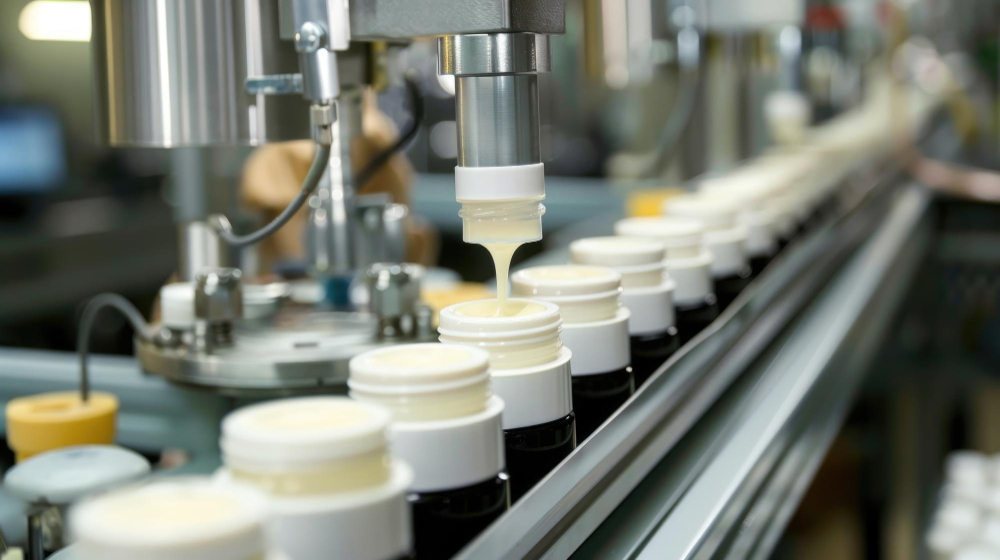
Cream Manufacturing Equipment Explained: From Mixers to Fillers
Read MoreC. Emulsification
- Ointments: The molten oil phase is transferred into a mixing vessel and blended at low shear to uniformly distribute APIs and any lipophilic additives. Continuous heating above the API's melting point ensures complete dispersion without degradation.
- Creams: High-shear mixers or rotor-stator homogenizers blend the hot oil and aqueous phases. Mixer speed and time are optimized to produce fine droplets (<1 µm) and a stable emulsion. Precise control of shear forces prevents overheating and limits air entrapment.
High-shear mixing not only stabilizes the emulsion but also enhances bioavailability by creating a larger surface area for drug release.
D. Cooling and Homogenization
Once emulsification is complete, the batch is gradually cooled to 35–40 °C under continuous agitation to prevent phase inversion and droplet coalescence. Next, vacuum homogenization applies low pressure and controlled shear to collapse entrapped air and refine the semisolid's texture.
The result is a silky-smooth product with uniform API distribution—essential for both patient acceptance and precise dosing.
E. Deaeration
Entrapped air not only compromises appearance but also invites oxidation and microbial proliferation. To eliminate bubbles, the cooled batch is subjected to vacuum cycles (down to ≤100 mbar) while gently stirring.
This deaeration step collapses microscopic air pockets, stabilizing pH and viscosity. It also extends shelf life by reducing oxygen-driven degradation pathways—ensuring that each tube or jar delivers the intended therapeutic benefit.
V. Types of Equipment Used
A. Mixing and Emulsification
For Mixing and Emulsion, following equipment are used:
Planetary Mixers
Planetary mixers use an agitator that spins on its own axis while simultaneously orbiting the mixing vessel—much like planets revolving around the sun. This dual motion guarantees thorough incorporation of APIs and excipients, even in highly viscous bases.
Available in capacities from 1 L (lab scale) to 500 L+ (production), these mixers offer variable speeds (10–200 rpm) for either gentle blending or moderate shear. Their removable tooling and jacketed bowls support precise temperature control and streamlined cleaning-in-place (CIP), key requirements for GMP compliance.
High-Shear Homogenizers
Rotor-stator homogenizers generate intense mechanical forces—typically at 3,000–20,000 rpm—to break droplets and particles into sub-micron sizes, yielding stable O/W emulsions. By achieving shear rates up to 10^6 s⁻¹, they cut emulsification times by up to 50% compared to low-shear mixers.
Scale-up considerations include tip geometry, rotor-stator clearance, and flow rate (10–2,000 L/hr) to balance throughput and energy efficiency.
Vacuum Emulsifiers
Vacuum emulsifiers integrate heating, mixing, high-shear homogenization, and deaeration in a single vessel. Operating under a controlled vacuum (≤100 mbar) at temperatures up to 80 °C, they collapse air bubbles and produce a uniform, bubble-free semisolid in one pass.
Advanced models feature touchscreen PLC recipe management, electronic batch records, and CIP/SIP capabilities, simplifying validation and minimizing cross-contamination risks.
B. Heating and Cooling
For Heating and Cooling operations, following equipment are in the use:
Jacketed Vessels with Temperature Control
Jacketed vessels feature an outer "jacket" through which heating or cooling media—such as steam, hot oil, or glycol—circulate to maintain precise temperatures. Advanced controllers hold the product within ±1 °C, safeguarding heat-sensitive APIs during fusion and emulsification.
Optimized agitator speeds (5–100 rpm) and strategically placed baffles ensure even heat distribution and eliminate hotspots. During scale-up, engineers calibrate surface-to-volume ratios and media flow rates to replicate lab-scale thermal profiles, ensuring uniform quality across all production volumes.
C. Filling Machines
To fill the ointment and cream, these are the machinery most commonly used:
Tube Filling Machines (Plastic, Aluminum)
Tube fillers accurately deposit semisolid formulations into collapsible tubes via piston or volumetric nozzles. Quick-change systems accommodate various diameters (10–60 mm) and materials, while in-line scrapers remove excess product to ensure clean sealing surfaces.
Sealing stations—either ultrasonic or heat-based—form leak-proof crimps. Automated inspection cameras verify fill weight (±1 g) and seal integrity, rejecting any units outside specifications to maintain batch consistency.
Jar & Bottle Filling Lines
Rotary or inline filler–capper systems streamline the filling, lidding, and closing of jars and tubs. Volumetric or weight-based heads dispense precise doses (5–500 g) at up to 30 units/min. Integrated check-weighers and vision systems confirm correct fill levels and label placement. Modular designs enable rapid format changeovers, maximizing uptime in facilities running multiple product lines.
Volumetric & Piston-Based Fillers for Dosing Accuracy
Piston fillers meter semisolid volumes by drawing product into a calibrated cylinder and dispensing it under controlled pressure. This method achieves tight tolerances (±0.5 %), even with viscosities up to 1 million cP. Electronic feedback continuously adjusts stroke length to compensate for temperature- or batch-related viscosity variations.
Their durable construction and straightforward cleaning cycles make piston fillers indispensable for high-precision semisolid manufacturing.
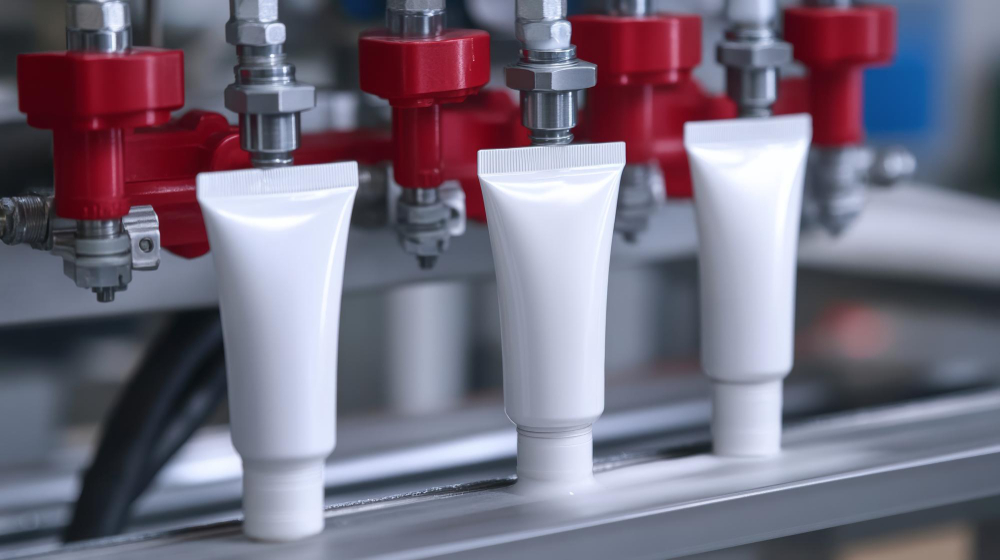
Ointment Filling Machines in Pharma: Types, Benefits, and Key Considerations
Read MoreVI. In-Process Controls and Critical Parameters
Ensuring product quality and batch-to-batch consistency during ointment and cream manufacturing hinges on tight control of key parameters. Below, each control point is explored in detail, reflecting best practices in modern GMP facilities.
A. Viscosity (Brookfield Viscometer)
Viscosity dictates a semisolid's spreadability, stability, and patient acceptability. Using a Brookfield viscometer, technicians measure torque at defined spindle speeds and temperatures to confirm the formulation meets target rheological profiles. Deviations signal issues like incorrect emulsifier levels or phase separation.
By sampling at critical stages—post-emulsification, cooling, and deaeration—manufacturers verify that the product retains its intended texture and remains within defined viscosity ranges (e.g., 50,000–150,000 cP for creams).
B. pH
The pH of creams (and some water-containing ointments) influences both drug stability and skin compatibility. A calibrated pH meter is used to check samples at key junctures: after blending the aqueous phase, following emulsification, and before filling. Formulations are typically maintained within a skin-friendly range (pH 4.5–6.5).
Any drift—due to preservative breakdown or interaction with APIs—triggers corrective actions such as buffer adjustments or batch hold for investigation.
C. Droplet Size (for Creams)
Cream stability and drug release depend on droplet size distribution. Laser diffraction or microscopic image analysis quantifies the mean droplet diameter, with typical targets below 1 µm for fine O/W emulsions. Monitoring droplet size immediately after high-shear homogenization and again post-cooling ensures the emulsion remains stable without coalescence.
Consistent droplet profiles minimize phase separation risks and support predictable bioavailability.
D. Homogeneity and Consistency
Uniform API dispersion is critical to dose accuracy. Samples are drawn from multiple vessel locations—top, middle, bottom—and assayed (e.g., HPLC) to confirm API concentration falls within ±5% of label claim. Visual inspections under standardized lighting check for color or texture gradients.
Any "hot spots" or undispersed particles prompt additional mixing or batch rejection. Ensuring homogeneity lays the foundation for reliable therapeutic performance.
E. Microbial Testing
Despite low water activity in ointments, creams require stringent microbial controls. In-process samples undergo bioburden testing (plate counts) to confirm microbial loads remain below predetermined limits (e.g., <100 CFU/g). Sterility checks apply to ophthalmic or other sterile semisolids, using membrane filtration or direct inoculation methods guided by pharmacopeial standards (USP <71>).
Rapid alert mechanisms ensure contaminated batches are quarantined immediately.
F. Deaeration Validation
Air entrainment can compromise both appearance and stability. After vacuum deaeration, residual dissolved gases are measured indirectly via viscosity and visual clarity checks. Periodic validation runs—where vacuum pressure, duration, and mixing speed are varied—establish the optimal deaeration cycle.
Documented acceptance criteria (e.g., zero visible bubbles and viscosity within spec) ensure each batch undergoes consistent air removal.
G. Real-Time Monitoring
Modern GMP plants deploy in-line sensors and SCADA systems to track temperature, mixing speed, torque, and vacuum pressure continuously. Real-time data capture enables trend analysis and immediate deviation alerts, reducing reliance on intermittent manual sampling.
Automated control loops can adjust mixing parameters on-the-fly, ensuring tight adherence to process parameters and minimizing human error. This integration of automation and analytics underpins efficient, compliant semisolid manufacturing.
VII. Packaging & Labeling
Packaging and labeling are the final—and critical—steps that protect semisolid products, ensure patient safety, and maintain regulatory compliance. Below, each sub-section is explored in detail.
A. Packaging Formats
B. Packaging Materials
For Ointments
For Creams
C. Labeling Requirements
Regulatory Mandates
As per the regulatory framework, every ointment and cream manufactured, must have the details below:
- Batch/Lot Number & Expiry Date: Ensures traceability and enables fast recall if needed. Display must comply with regional font-size regulations (e.g., FDA requires a minimum of 1 mm height).
- Storage Conditions: Must specify any temperature or light restrictions (e.g., "Store below 25 °C," "Protect from light"). This protects API integrity and guarantees shelf-life claims.
Content Specifications
- U.S. (FDA) Drug Facts Label:
- Sections: Active ingredients, purpose, uses, warnings, directions, other information (storage), inactive ingredients, and contact info.
- Format: Standardized "Drug Facts" panel ensures consistency across topical over-the-counter products.
- EU (EMA) Composition Label:
- Sections: Quantitative list of all excipients and their functions (e.g., emulsifier, preservative), per Annex I of Directive 2001/83/EC.
- Format: Must include "For external use only," batch details, and the "Use by" date.
Additional Considerations
- Child-Resistant Closures: Required for certain APIs with pediatric safety concerns.
- Braille or Tactile Markings: In some regions, mandatory for visually impaired users.
- Serialization & Track-and-Trace: Increasingly required in regulated markets to prevent counterfeits, using 2D barcodes or RFID tags.
VIII. GMP, Validation, and Quality Assurance
A. Facility Requirements
Semisolid manufacturing demands a controlled environment—typically ISO 8 (Class 100 000) or cleaner—to minimize particulate and microbial contamination. Cleanrooms are zoned by risk: manufacturing suites, filling areas, and sampling rooms each have defined airflow and access protocols.
A robust HVAC system maintains temperature (±2 °C) and relative humidity (30–60 %), preventing base softening or water condensation. HEPA-filtered air exchanges (≥20 ACH) create positive pressure differentials, ensuring that any leaks expel outward.
B. Process Validation (IQ/OQ/PQ)
- Installation Qualification (IQ): verifies that equipment and utilities are installed per design specifications—correct piping, instrumentation, and safety interlocks. Detailed checklists confirm calibration of sensors and proper utility connectivity.
- Operational Qualification (OQ): challenges equipment across defined operational ranges: mixing speeds, temperatures, vacuum pressures. Test runs document consistent performance under worst-case conditions.
- Performance Qualification (PQ): proves that under normal production loads, the process yields product meeting all predefined quality attributes (e.g., viscosity, assay, microbial limits). Multiple consecutive batches demonstrate repeatability.
C. Documentation & Traceability
A Batch Manufacturing Record (BMR) captures every action: raw material lot numbers, equipment IDs, operator signatures, in-process test results, and deviations. This single source of truth underpins regulatory audits and product recalls.
Cleaning logs track sanitization cycles—detergent concentrations, contact times, and verification swabs—to prevent cross-contamination. Equipment usage logs record runtime, maintenance events, and calibration dates, ensuring full lifecycle traceability.
IX. Regulatory Guidelines
These frameworks dictate facility design, documentation, process controls, and product specifications to ensure patient safety and consistent quality.

GMP Guidelines for Semi-Solid Manufacturing: What You Must Know
Read MoreX. Stability Testing & Shelf Life
- Real-Time & Accelerated Testing (ICH Q1A): Samples are stored at long-term (25 °C/60 % RH) and accelerated (40 °C/75 % RH) conditions. Data at 0, 3, 6, and 12 months (real-time) versus 3 and 6 months (accelerated) inform shelf-life claims.
- Key Parameters: pH drift, appearance (phase separation, color change), microbial limits, and API assay. Stability failures—such as cream phase separation or petrochemical rancidity—trigger reformulation. Container-closure compatibility studies prevent leaching or adsorption.
XI. Innovations in Ointment and Cream Manufacturing
A. Continuous Manufacturing
Continuous manufacturing systems integrate batch steps—melting, homogenization, cooling, and filling—into a single, uninterrupted process line. Inline homogenizers create stable emulsions on the fly, while synchronized fillers meter and package product without interim holds. This approach slashes cycle times and reduces variability by eliminating start-stop transitions.
Real-time monitoring via PAT tools (e.g., in-line viscometers, NIR analyzers) enables immediate release decisions, cutting quality-control lead times and accelerating time to market.
B. Smart Equipment Integration
Modern semisolid plants employ SCADA (Supervisory Control and Data Acquisition) platforms to orchestrate mixers, jacketed vessels, and vacuum systems from a central control room. IoT-enabled sensors continuously transmit critical parameters—temperature, mixing torque, vacuum levels—to cloud-based dashboards.
Automated alarm thresholds alert operators to deviations, while audit-ready logs document every process change. This digital ecosystem not only strengthens compliance and traceability but also supports predictive maintenance, reducing unplanned downtime.
C. Novel Formulations
- Liposome Creams: Phospholipid vesicles encapsulate both hydrophilic and lipophilic APIs, enhancing skin penetration and reducing irritation. Tailored lipid compositions and extrusion techniques produce uniform, unilamellar vesicles for consistent drug delivery profiles.
- Nanoemulsions: High-pressure homogenization or microfluidization yields droplets below 100 nm, dramatically increasing surface area and facilitating rapid absorption. These systems improve bioavailability for poorly soluble actives and provide elegant, transparent formulations for patient appeal.
- Thermoreversible Gels: Poloxamer- or cellulose-based polymers remain liquid at room temperature but solidify into gels at skin temperature (32–34 °C). This phase shift ensures easy application and prolonged residence time at the target site, optimizing drug uptake and enhancing patient compliance.
These innovations—driven by advances in process engineering and material science—are reshaping semisolid manufacturing, delivering safer, more effective, and user-friendly topical therapies.
XII. Contract Manufacturing Organizations (CMOs)
A. Overview
Many pharmaceutical companies—especially those without in-house semisolid capabilities—partner with CMOs that boast specialized cleanrooms, validated equipment, and deep regulatory know-how. By outsourcing to a dedicated CMO, firms can accelerate time to market, minimize capital expenditure, and leverage established quality systems.
CMOs also offer flexibility to handle multiple product types, from non-sterile dermatological creams to aseptic ophthalmic ointments.
B. Selection Criteria
Regulatory Track Record
A CMO's history with regulatory bodies is paramount. Look for partners that have passed recent FDA and EMA inspections without critical observations. Detailed inspection reports—available via public databases—reveal how effectively a CMO addresses deviations and implements corrective actions, ensuring consistent compliance and reducing the risk of supply interruptions.
Batch Size Flexibility
Product portfolios often span clinical to commercial scales. The ideal CMO should seamlessly transition from small-scale batches (1–10 kg for Phase I/II studies) to large-scale production (500+ kg or more for commercial distribution). Equipment redundancy and scalable process designs allow CMOs to adjust output rapidly without compromising quality or lead times.
Emulsion Technology Expertise
Semisolid formulations demand precise emulsification, deaeration, and aseptic handling. Evaluate a CMO's proficiency in high-shear homogenization, vacuum emulsification, and inline process analytical technologies (PAT). Facility tours and technical audits can confirm that their platforms deliver tight droplet-size control, robust microbial safeguards, and reproducible texture—key factors for product performance and patient satisfaction.
XIII. Leading Manufacturers & Equipment Suppliers
Partnering with these suppliers ensures access to state-of-the-art machinery, robust service networks, and compliance support.
XIV. Market Trends & Future Outlook
A. Cosmeceuticals & Rx Dermatology Growth
Consumer interest in premium skincare continues to surge, driving a parallel rise in both over-the-counter cosmeceuticals and prescription dermatology ointments. Anti-aging actives like retinoids, peptides, and hyaluronic acid are rapidly moving from niche labs into mainstream creams, spurring manufacturers to invest heavily in R&D.
On the Rx side, novel formulations for conditions such as atopic dermatitis and acne scars leverage advanced delivery vehicles—liposomes or nanoemulsions—to enhance efficacy and reduce irritation. As the line between cosmetic and therapeutic blurs, semisolid producers must stay ahead with innovative excipients and clinical validation to meet evolving market demands.
B. Sterile Ointments Expansion
The ophthalmic and advanced wound-care sectors are accelerating demand for sterile ointments, which require dedicated aseptic processing lines and rigorous environmental controls. Single-dose ophthalmic tubes with preservative-free formulations are gaining traction, eliminating patient-safety concerns associated with multi-use vials.
In wound care, antimicrobial and growth-factor-loaded semisolids are moving into hospitals and home health channels, necessitating sterile fill–finish suites. These trends are prompting contract partners and in-house producers to retrofit facilities or build new cleanrooms to support growing sterile semisolid portfolios.
C. Sustainability Initiatives
Environmental, social, and governance (ESG) imperatives are reshaping packaging and equipment choices in semisolid manufacturing. Biobased polymers—PLA and recycled HDPE—are replacing traditional plastics for tubes and jars, while metal–plastic hybrid laminates are being reformulated for recyclability. On the equipment side, heat-recovery jackets and energy-efficient motors cut greenhouse-gas emissions and operating costs.
Beyond carbon footprints, water-conservation measures in CIP cycles and the shift to solvent-free cleaning agents underscore a broader industry commitment to sustainable practices without compromising product integrity.
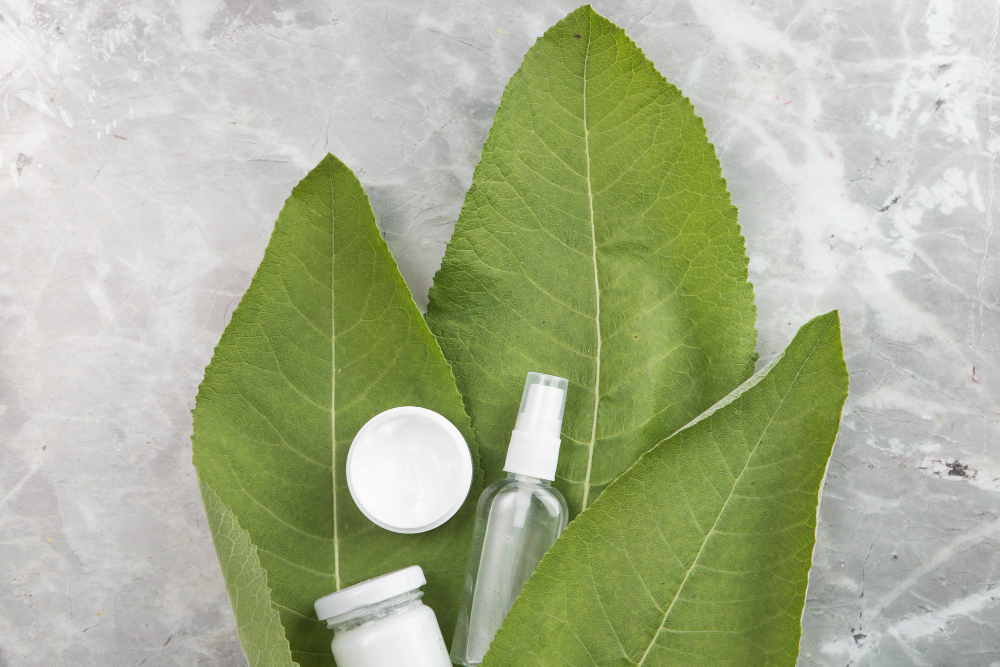
Sustainability in Topical Drug Manufacturing: Greener Creams & Ointments
Read MoreD. APAC Market Surge
Asia-Pacific stands out as the fastest-growing region for semisolid production, driven by expanding middle-class skincare markets and burgeoning biotech hubs in India and China. Local players increasingly partner with global CMO networks to license novel formulations and scale manufacturing domestically. Governments in both countries are offering tax incentives and relaxed regulations for "innovation zones," fostering R&D in nanotechnology and biologic-loaded semisolids.
As cost-effective contract services proliferate, Western and regional brands alike are tapping APAC capacities—positioning the region as a key source of next-generation creams and ointments.
XV. Conclusion
What seems like a simple tube of cream is actually the result of a deeply engineered process—where precision formulation, sterile conditions, and robust quality control come together.
Whether you're a formulation scientist, process engineer, or regulatory expert, understanding ointment and cream manufacturing unlocks insights into one of the most patient-friendly and versatile dosage forms.
In the evolving world of personalized medicine and biotech therapies, even semisolids are going high-tech—and that's a story worth following.
XVI. FAQs
- 1. What's the difference between ointments and creams? Ointments are greasier and occlusive (water-free or W/O), while creams are emulsions with a lighter feel (O/W or W/O).
- 2. Why is deaeration important in ointment manufacturing? It removes entrapped air, preventing microbial growth and oxidation, and improving shelf life and texture.
- 3. Can ointments be sterile? Yes, especially ophthalmic ointments. These require sterile production and aseptic filling environments.
- 4. What are the key challenges in cream manufacturing? Ensuring emulsion stability, avoiding phase separation, microbial control, and consistent texture are common challenges.
- 5. Are automated ointment plants common? Yes, modern facilities use vacuum emulsifiers, inline homogenizers, and SCADA-integrated systems for high throughput and compliance.
